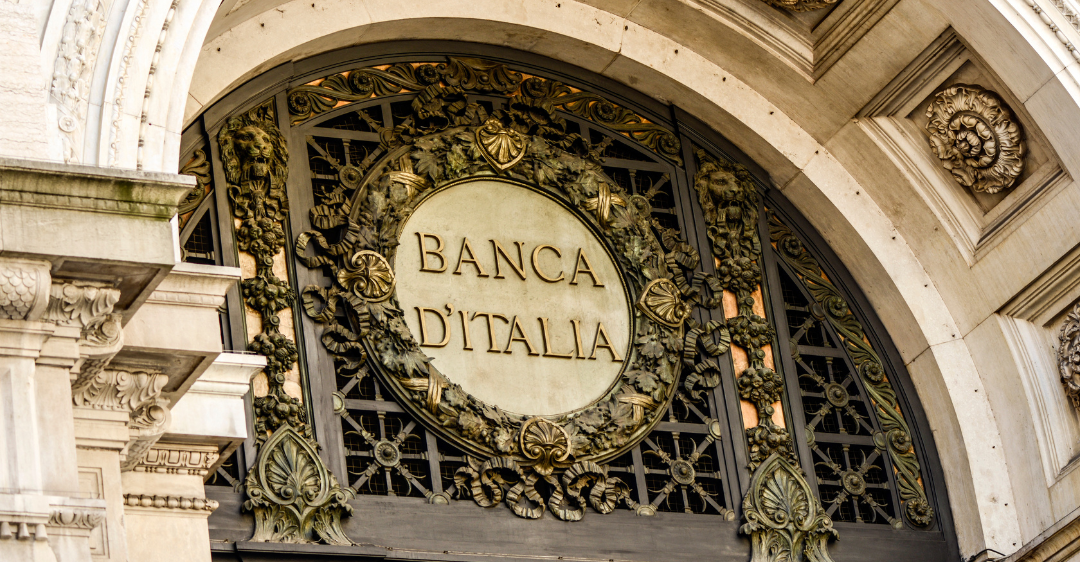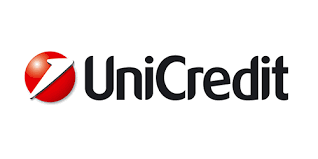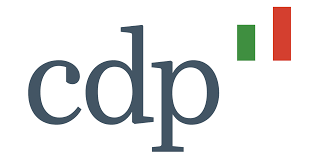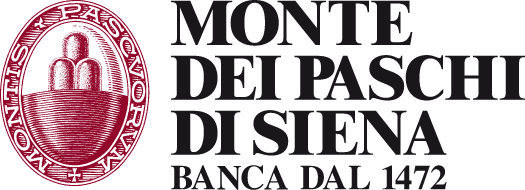Top Banks in Italy
Italy is the eighth-largest economy in the world.
Italy, also known as the Republic of Italy, is a European country. Italy is now an economically developed country. It is the eighth-largest economy in the world. It is a founding member of the European Union and the North Atlantic Treaty Organization.

It is also a member of the Schengen Agreement, the United Nations, the G8, and other international organizations. Italy has a long history in the cultural and artistic fields and has a high international status.
According to modern historians, the roots of modern banking can be traced back to medieval and early Renaissance Italy. Banca Monte Dei Paschi di Siena, the oldest bank still in existence, was founded then.
Modern banking sprang up in northern Italy, Florence, Venice, Lucca, and elsewhere. Modern banking then spread to northern Europe and other parts of the world.
The Italian banking industry underwent a major reform in 1893, and it was after that reform that Italy's central bank, the Bank of Italy, was established.
Intesa Sanpaolo
Intesa Sanpaolo is an Italian international bank. On 26 August 2006, two Italian banking groups, Banca Intesa and Sanpaolo IMI, approved a merger plan.

The merger of the two companies was completed on 1 January 2007, and the new name of the combined bank was Intesa Sanpaolo. The company is headquartered in Turin, Italy.
The company's main business is retail banking, investment banking, private banking, public finance, investment management, and so on. Retail banking is its core business. The company's retail banking market share of around 10% in Italy.
The bank has more than 3,100 branches. Intesa Sanpaolo also has a strong presence in other parts of the world. Intesa Sanpaolo has about 1,000 branches and 7 million customers in central and eastern Europe, North Africa, and other regions.
Intesa Sanpaolo ranks 298th on Fortune's 2022 list of the World's Top 500 companies. The company has annual revenue of $46.5 billion and assets of $1,215.4 billion. The company is now part of the Euro Stoxx 50 stock market index.
UniCredit
UniCredit was founded in 1998. The bank was formed by the merger of Credito Italiano and Unicredito. The company is headquartered in Milan, Italy. The bank's main business includes retail banking, private banking, investment banking, insurance, and so on.

Since its establishment in 1998, UniCredit Group has expanded the business scope of the bank through more mergers and strengthened the group's strength. For example, in 1999, UniCredito Italiano acquired the Polish company Bank Pekao.
In 2005, UniCredit merged with the German group HypoVereinsbank. In 2007, the bank merged with Capitalia Group, once Italy's fourth-largest banking Group. Then it bought ATF Bank, based in Kazakhstan, and Ukrsotsbank, based in Ukraine.
This was followed by UniCredit's sale of Polish Bank Pekao in 2016. But through these mergers and the company's growth, UniCredit has successfully expanded to 24 countries and regions.
UniCredit serves more than 15 million customers worldwide, including Italy, Austria, Germany, Central Europe, Eastern Europe, and other places.
UniCredit was ranked number one in Italy in Corporate Knights' 2022 ranking of the world's most sustainable companies. According to Fortune magazine, 2021 figures show revenue of $27.2 billion. The total assets of the company are 960.4 billion.
Cassa Depositi e Prestiti
Cassa Depositi e Prestiti was founded in 1850, with its original headquarters in Turin. The location of its headquarters was later moved with the change of the Italian capital. From Turin to Florence to Rome. In 1875, the postal savings book was created.

The bank manages postal savings and applies them to the country's modernization. In addition, Cassa Depositi e Prestiti uses the funds to provide loans to municipalities to help build national infrastructure, schools, etc.
In the following decades, the bank contributed to the transformation of Italy's modern economy and the construction of a modern financial system. In 2003, Cassa was transformed into a joint-stock company.
The bank was no longer part of the public administration but became an investment banking unit in the market.
In 2006, The European Central Bank put the Cassa Depositi e Prestiti with France's CDC-Caisse de Depots et Consignations and Germany's KFW-Kreditanstalt Fur Wiederaufbau together as a "financial and monetary institution."
In 2015, Cassa Depositi e Prestiti became the Italian Development Cooperation Financial Institution, which has helped the development of many Italian companies. The bank now has more than 1,500 employees.
In 2021, the bank's net profit reached €5.3 billion, and its total capital reached €517.1 billion.
Banco BPM
Banco BPM was founded in 2017. The bank was formed by merging Banco Popolare and Banca Popolare di Milano. Its headquarters are in Verona. The company provides various financial services, including retail banking, investment banking, insurance, and financing.

The company now has more than 22,000 employees. It has more than 1,700 branches in Italy, serving more than 4 million users across the country.
The bank's operations are now concentrated in northern Italy, helping companies in a highly industrial part of Europe achieve higher profitability. It is now one of the country's biggest retail banks. Banco BPM ranks No. 1300 on the 2022 Global 2000 list released by Forbes.
And the bank's shares are a component of the FTSE MIB, Italy's blue-chip index. By 2021, the bank's operating income reached €4.51 billion, and the bank's total assets reached €200 billion.
Banca Monte dei Paschi di Siena
Banca Monte Dei Paschi di Siena SpA has a long history. The bank dates back to 1472. MPS was established as a pawnshop in 1472 by the decision of the General Council of the Republic. It was created to provide loans to needy people at rock-bottom interest rates.

In the early 20th century, the bank expanded its business to other regions. Finally, in 1936, banks were officially declared credit institutions under public law.
In 1946, banks began opening branches in financial centers worldwide, including New York, London, Singapore, and others. From then on, the bank started to do business across borders. The bank was converted from a statutory company to a limited company in 1995.
In 1999, the bank's parent company was successfully listed on the Milan Stock Exchange. After going public, the bank began rapidly expanding its business and acquiring several companies. As a result, Banca MPS began to become a bank of national importance.
Banca MPS is now one of the largest commercial banks in Italy. The bank is now headquartered in Siena. It has 1368 institutions in Italy and 11 branches overseas and is located in the world's financial center. In 2021, the bank's revenue was €2.98 billion, and the bank's total capital reached €137.8 billion.
BPER Banca
BPER Banca SpA traces its roots back to the Banca Popolare di Modena, founded in 1867. This bank merged with Banca Cooperativa di Bologna in 1983 to become Banca Popolare Dell 'emilia.

In 1992, the bank again merged with Banca Popolare di Cesena to become Banca Popolare dell 'emilia Romagna. Over the next decade, the bank made several acquisitions to expand its business scope.
At the end of 2016, the bank was re-registered as BPER Banca SpA.BPER Banca now has branches in most parts of Italy through acquisitions and expansion. The bank is now headquartered in Modena and has 1,273 branches and offices.
According to Forbes, BPER Banca ranks 1389 as the world's top 2000 companies in 2022. The company's business includes retail banking, corporate banking, and insurance. BPER Banca is listed on the Italian Stock Exchange and is a constituent of the FTSE MIB Index.
Banca Nazionale del Lavoro S.p.A
The bank was founded in 1913 under the name Istituto Nazionale di Credito per la Cooperazione. The bank was originally established to help and support the development of the national cooperative movement and to finance the industrialization of the national economy.

In the 1920s, the country's cooperative system suffered a crisis, and the banks were forced to restructure. In 1929, the bank became a state-owned enterprise and was renamed Banca Nazionale del Lavoro.
After World War II, the bank took an active part in the country's economic reconstruction, financing the modernization of many industries. However, in 1998, BNL was privatized due to increasing competition in the industry and the liberalization of the market.
BNL was listed on the Milan Stock Exchange in the same year. BNL was acquired by BNP Paribas in 2006. Today BNL is a modern bank with more than 2.7 million customers and 13,000 employees nationwide.
Mediobanca
Mediobanca was founded in 1946; its headquarters are located in Milan. Raffaele Mattioli and Enrico Cuccia founded the company. The company was originally set up to support the country's post-war reconstruction efforts.

1956 The bank was listed on the Italian Stock Exchange. After going public, the bank's business has been expanding. The bank has successfully carried out personal credit, leasing, trust management, retail banking, private banking, and so on.
In 1988, the bank was privatized. In 2004, the bank group began to expand its business overseas. The first office was opened in Paris, followed by offices in Moscow, New York, London, and other international financial centers to develop the business.
In 2015, Mediobanca bought Cairn Capital. The acquisition establishes an asset management platform that helps Mediobanca's international strategy. Mediobanca is now part of the FTSE MIB index. The bank's revenue in the 2021-22 financial year was 2.85 billion euros.
Credit Agricole Italia
Credit Agricole Italia SpA is a large banking group. The bank dates back to 1859. It was formerly known as Credit Agricole Cariparma SpA. Its headquarters are in Parma. Since its establishment, the company has undergone many names and corporate structure changes.

In 2007, the bank was acquired by Credit Agricole. In 2016, the Italian banking group started using Credit Agricole Italia. Credit Agricole Italia's businesses include retail and corporate banking, providing financial services to businesses and individuals.
The bank's parent company, Credit Agricole Group, is headquartered in Paris, France. Credit Agricole Group is now the 10th largest bank in the world. It operates in more than 50 countries. It has more than 11,000 branches serving more than 50 million customers worldwide.
Credit Agricole Italia operates in 11 regions in the country, Covering more than 70% of the population. The bank's net income in 2020 was €168.21 million.
Banca Mediolanum
Banca Mediolanum SpA is a Milan-based banking group. The bank's history dates back to 1982 called Programma Italia.

Mediolanum SpA was created in 1995 as a holding company for the group's operations in response to changes such as the globalization of markets and the advent of the euro. In 1996, the company was listed and traded on the Milan Stock Exchange.
After the listing, Banca Mediolanum expanded its business and presence in overseas markets. In 2000, Banca Mediolanum started operations in Spain and acquired the Fibanc Banking Group.
In 2001, the company successively acquired Gamax Holding AG and Bankhaus August Lenz & Co to help develop the bank's European business. The bank has more than 2,200 employees and serves over 1.2 million customers.
In 2021, the bank's revenue was 3.46 billion. As a result, Banca Mediolanum is now one of the country's fastest-growing banks and a member of the FTSE MIB index.




or Want to Sign up with your social account?